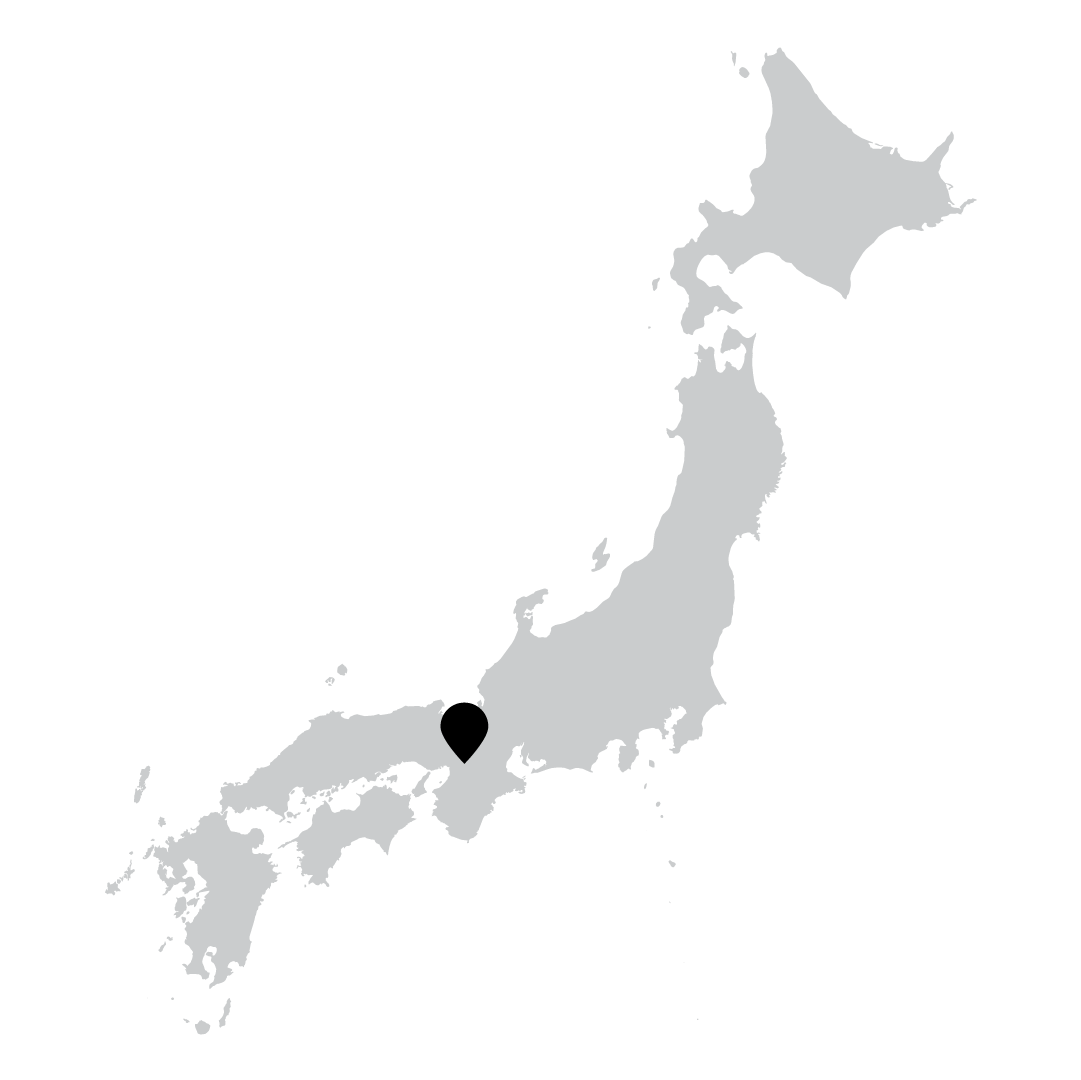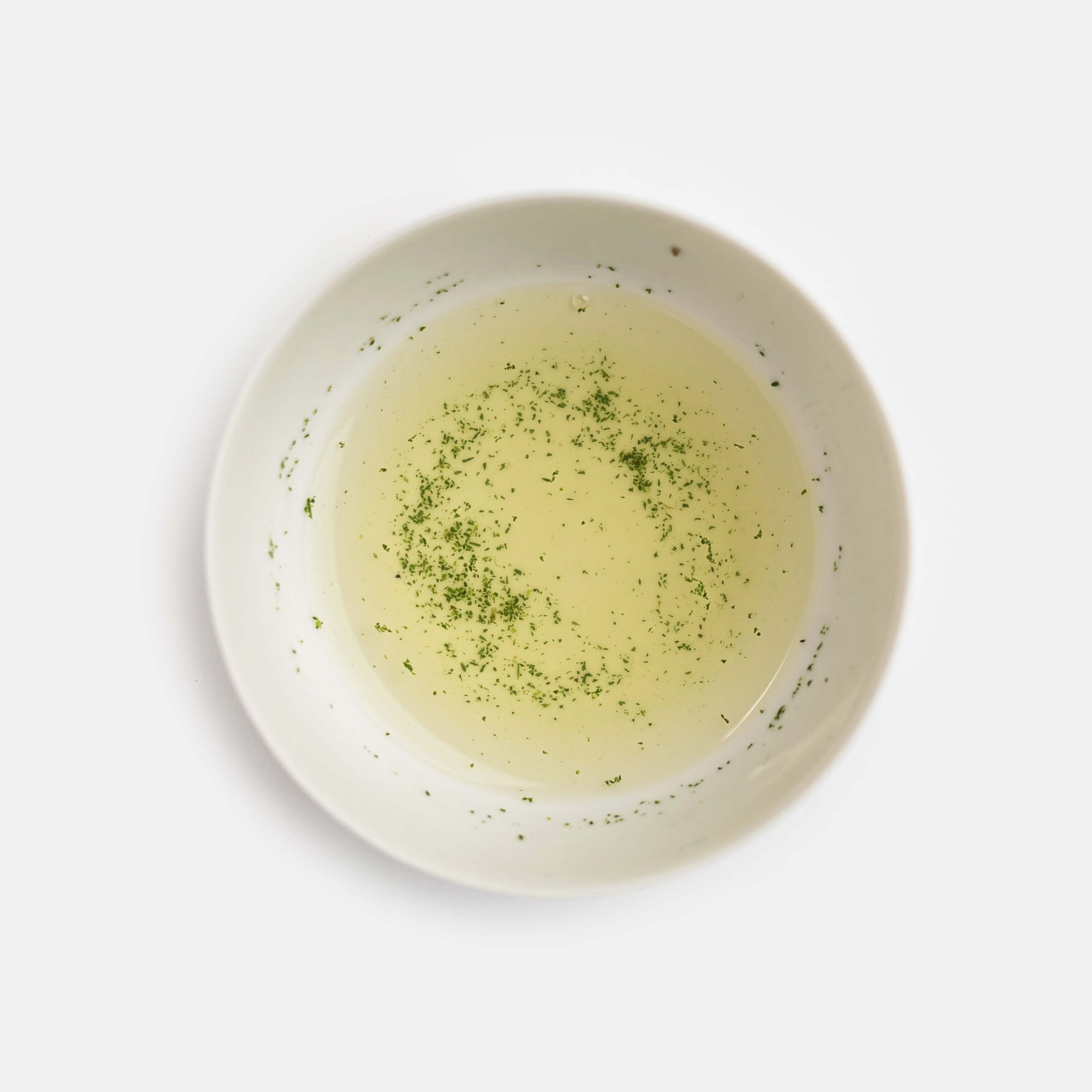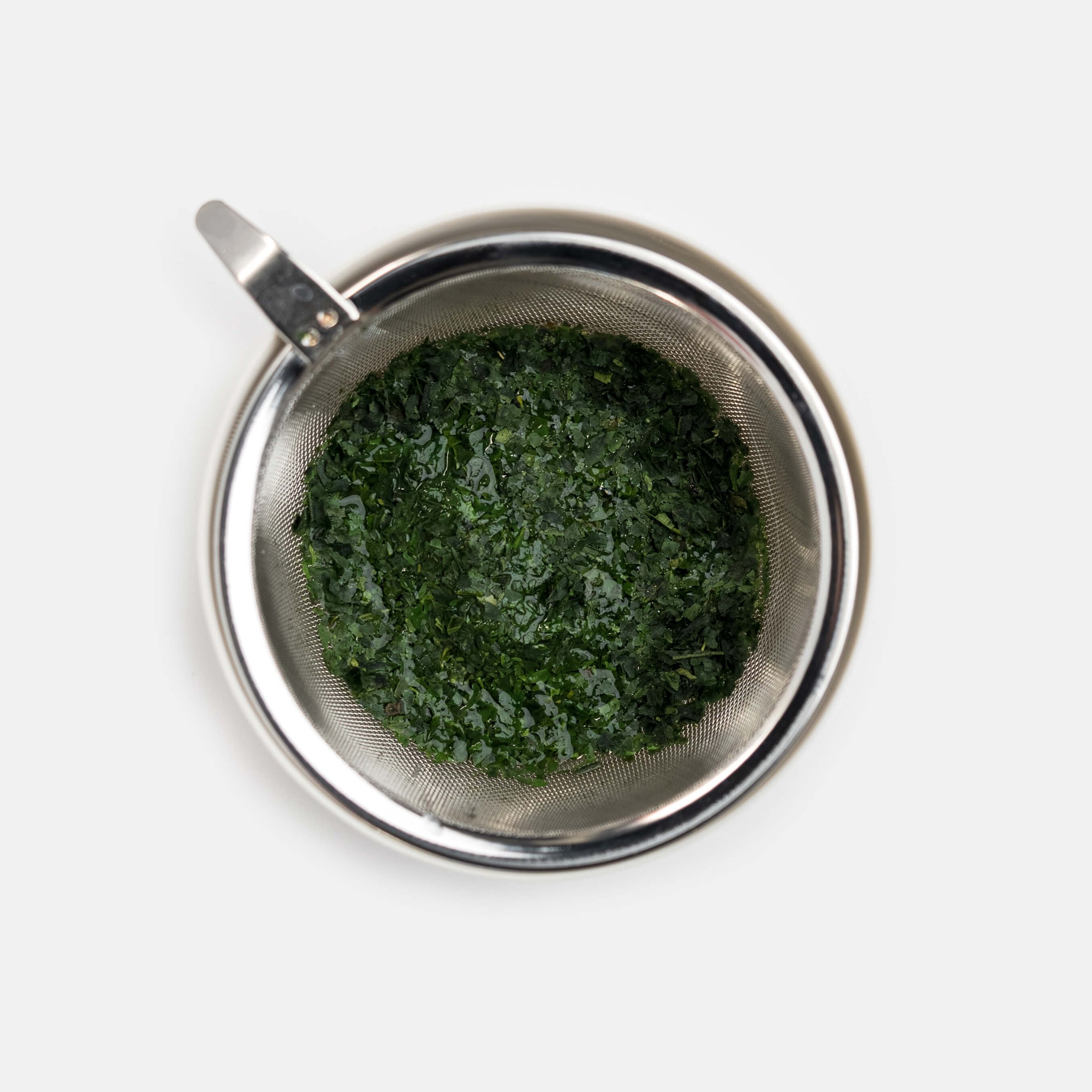About this Matcha
A wonderfully bright Matcha, truly electric lime in color.
In fine wine, different grape varieties have high and low points. This is true for tea plants as well.
The hallmark of Matcha is that the bush is shaded before harvesting increasing the savory taste and reducing harshness.
Shading comes at a cost, both monetarily, but also because the practice harms the plant as it starves it from sunlight.
One “strong point” of Asahi is the plant can survive more intense shading than other cultivars (such as the more common Samidori.)
Exceptionally strong shading (that Asahi can endure) can produce Udomei.
Udomei are radically bright-green leaves that are the reason this Matcha is so intensely colored.
-
To make a fresh and smooth bowl of Usucha or Koicha, follow our brewing instructions.
-
Long-term Storage: Store unopened Ooika Matcha in the refrigerator. Consume within 6 months.
Room-Temp Short-term Storage: Store opened Ooika Matcha in a cool, dark place away from sunlight. Consume within 3 months.
Refrigerator Short-term Storage: Opened Matcha can be stored in the refrigerator to help maintain freshness, however, the Matcha is at risk of condensation when cooler than ambient air. For this reason, if you choose to store an opened Matcha in the refrigerator, be sure to take the Matcha you need and then immediately place it back in the refrigerator to minimize exposure to the warm air.
Ochairinikki (御茶入日記)
Category Green tea (お茶) |
Subcategory Oishitacha (おおいしたちゃ) |
Cultivar Asahi (あさひ) |
Producer Sakataさん |
Terroir Hamadai Basin, Uji, Kyoto |
Vintage 2024 |
Harvest Time Single Spring Harvest (一番茶) |
Harvest Method 100% handpicked (手摘み, Tezumi) |
Shading Style Traditional Rice Straw (ほんず, Honzu) |
Shading Duration 40 days |
Milling Ishi-Usu (石臼) stone-milled by Ooika |
Packaging Cold-stored, oxygen-free bag |
Visit the Farm
OOIKA MATCHA leads the industry with the most precise souring details and transparency. Let’s visit Sakataさん’s farm and see where this Matcha comes from.
Awards
Sakataさん is a highly distinguished farmer, with numerous awards and competition placements. Below is a selected, and non-exhaustive list.
First Prize, Minister of Agriculture, Forestry and Fisheries Award, 68th Kansai Tea Fair, Tencha category.
The 75th National Tea Fair, Heavenly Green Tea Category, Minister of Agriculture, Forestry and Fisheries Award
The 39th Kyoto Prefecture Tea Fair, Tencha Category, 1st Prize, Minister of Agriculture, Forestry and Fisheries Award
First Prize, Minister of Agriculture, Forestry and Fisheries Award in the category of hand-picked mature trees at the 2022 Kyoto Prefecture Superior Tea Plantation Fair.
Sourcing Details
Cultivar Details
Asahi
One of the most fine cultivars for the production of quality Matcha, Asahi is notoriously difficult to cultivate.
Excellent Matcha is made from unground tea leaves that can survive heavy shading while remaining thin and soft. Asahi fits the bill on all three counts.
However, the bush has a shallow root structure and low volume potential, making it a fickle cultivar to harvest and keep healthy.
Tea pickers, known as Chazumi, are paid by weight. Due to the low volume of the Asahi bush, this can be challenging.
According to Sakataさん, 1 kg of freshly picked tea leaves “probably” creates less than 60 grams of final Matcha.
Producer Details
Sakataさん
A 5th generation farmer from Hamadai, Uji, Kyoto—one of the richest and most renowned terroirs within Japan.
Sakataさん is joined by his son, the 6th generation who has taken on the responsibility of providing Honzu (traditional bamboo and rice straw) shading for the farm.
Multiple award-holding, including first prizes in the highly competitive National Tea Competition, Kansai Tea Fair, Kyoto Tea Fair, and more. Sakataさん uses his own tea factory which is only active for three weeks a year, built over 60 years ago by his grandfather (3rd generation.)
Region Details
Hamadai Basin
Hamadai is a riverbed along the Kizu River (木津川) in Uji, with a 350-year history of cultivation. Sakataさん has told me that the terroir has never used chemicals of any kind, which makes the terroir fairly traditional.
Hamadai is within Uji, making Hamadai an Uji-microterroir. Due to its geographically minuscule size, Hamadai is rather rare and exceptional—and Ooika is deeply grateful to Sakataさん for sharing such precious material with us.
Tea that comes from Hamadai is known as Hamacha (Hama Tea.) The site is also fairly famous in Japanese media, as it’s the location of the Nagare-Bashi (Flow-away) Bridge.



















